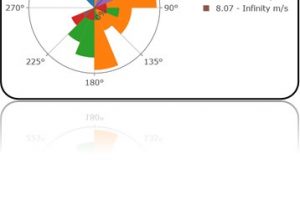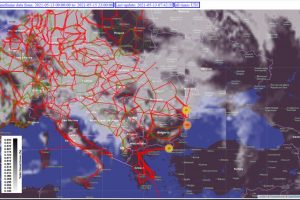The development and implementation of advanced digital infrastructure and artificial intelligence (AI) has been seen as a must have by the offshore wind sector. AI algorithms are now capable of providing more than just a way to reduce operations and maintenance (O&M) costs, with new technologies able to stabilize the grids and increase electricity dispatch efficiency already available on the market. AI provides for a better weather and production forecast, directly increasing the flexibility of these energy sources.
Energoinfo offers variety of know how and AI based services:
Data science in service of optimized turbine O&M
It is possible to give a pretty precise information on curves of turbine mechanical stress in a normal load operations as well as in other possible regimes, based on wind speed data. This can be used for a later on turbine design improvements. It is possible to test and estimate, based on wind speed data, how often the turbine should be maintained. Existing standards used for design, operation and maintenance would be analyzed and proper recommendations made. Energoinfo is doing something very similar with the ampacity forecast under OneNet, where we look for the optimal periods of time in which power system elements can be put under more stress, following the environmental conditions very precisely with our AI algorithms. In this case we would look for how we can extend the maintenance periods and make it more efficient budget and material wise.

Marine high resolution weather and energy predictions
Marine severe weather information system
Utilizing high resolution Numerical Weather Predictions in combination with multilayered GIS based GUI with the hea-map and time-dimension functionality. Experience from FARCROSS and OneNet h2020 projects, shown to be unreplaceable for the system operation monitoring and early warning systems, which are able to predict severe weather regimes for up to 7 days ahead.
AI based weather and energy output predictions
Marine weather and energy output predictions based on a high resolution Numerical Weather Predictions and deep modeled wind parks and surrounding grid infrastructure. Each wind turbine is modeled separately and then aggregated on the park level. Simulations are done for the wind park itself, as well as for the part of the grid which connects the wind park with the rest of the power system, making a unique coupling of precise weather predictions, power output predictions and grid state predictions.

Optimal location selection and grid connection studies based on a differential evolution and georeferencing
Grid connection related reinforcements identification based on a differential evolution and georeferencing is a novel approach based on the differential evolution method, proposed by Storn and Price. The differential evolution had been adapted for utilization in numerous power system sector applications. As for the system planning, differential evolution has proven to be more reliable and to provide more cost-effective solutions than the more conventional techniques. Since the new approach is based on a connection of differential evolution and geographical characteristics of the system in which the optimal allocation of distributed generation in the area can be established by the differential evolution, identifying the optimal location, as well as the optimal grid connection option that should be implemented in the system, according to the results of the conducted multicriteria analysis.

Regulatory/ policy aspects for HVDC and off shore grid connections
Analysis, improvements and assistance in the implementation related to the following network codes:
- Requirements for Generators – RfG (COMMISSION REGULATION (EU) 2016/631),
- High Voltage Direct Current Connections – HVDC (COMMISSION REGULATION (EU) 2016/1447).
